Russia’s nuclear missile Burevestnik: all bluff, no bite
global.espreso.tv
Tue, 28 Oct 2025 13:43:00 +0200

Contents1. From nuclear reactor to “special device”: brief history of Russia’s Burevestnik2. The American Pluto: why the U.S. abandoned the idea of a nuclear-powered missile3. What is known about the technical specifications of the Burevestnik4. Why Russia pulled the Burevestnik bluff out of its sleeveSerious nuclear powers regularly test the readiness of their forces and trial new elements, but they do so quietly. Russia, on the other hand, does it loudly and reflexively, particularly when its leadership urgently needs the attention of other countries.In September, Russia began intensively sending drones toward Northern Europe. The main goal? NATO had scheduled its annual nuclear forces exercises for the second half of October, modernized based on new U.S. technologies. Russia aimed to disrupt these exercises.However, the exercises proceeded successfully and on schedule, as previously reported. They were communicated only as necessary to the public in the involved countries. After NATO’s exercises demonstrated resilience to new threats and Russian pressure, Russia again conducted unannounced exercises of its nuclear triad. These had no impact on decision-making in the U.S. or Europe regarding issues important to Russia, including the continued Western demand that Moscow cease hostilities against Ukraine along the front line.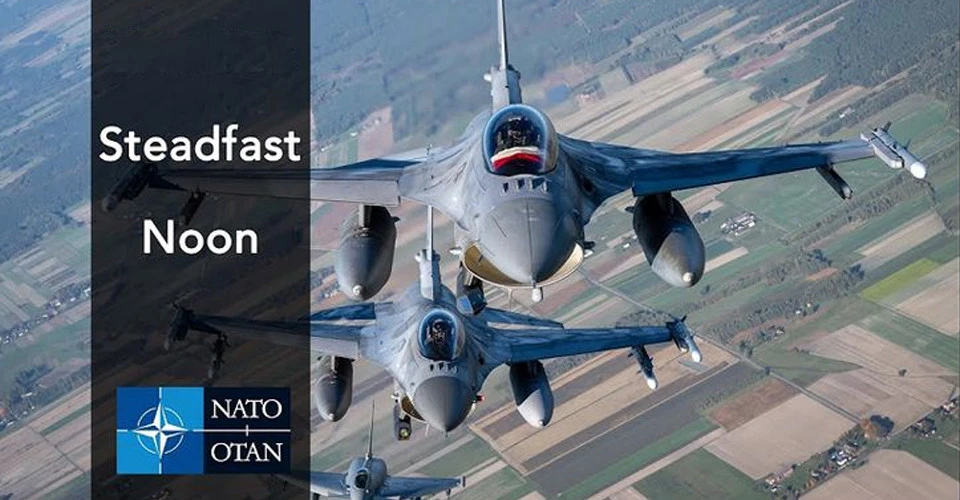 NATO nuclear exercise Steadfast Noon 2025, photo: nato.intThat’s when the nuclear Burevestnik entered the information space, without any evidence of its existence as a combat-ready weapon. The head of Russia’s General Staff merely reported to the Russian leader that this, essentially, nuclear-powered cruise missile allegedly flew 14,000 kilometers in fifteen hours on October 21, without any details on when, from where, or to where. Efforts to convince Western and Chinese intelligence that this actually happened, so they would raise the alarm, failed. As a result, the “grand success” of Russian weapons developers had to be reported to Russian television.So what is it really?From nuclear reactor to “special device”: brief history of Russia’s BurevestnikInformation about the Burevestnik still comes solely from Russian sources. Wherever details about this missile appear, they originate from Russia, with the data simply circulating in a loop.Specifically, the Russians claim the missile has the designation 9M730. Its publicly visible history began on March 1, 2018, with slides and animations in Putin’s speech at the Manege Hall in Moscow, just before his re-election as president.From the animations and comments, it was clear that the missile is a cruise type with a nuclear-powered jet engine instead of a conventional turbojet. According to the presentation, this was supposed to give it “practically unlimited range,” allowing it to circle the Earth indefinitely in search of a target and bypass air defenses from unexpected directions.The proclaimed “special feature” of the Burevestnik is a nuclear power unit (reactor) in a direct-flow air-jet engine. This reactor heats external air to generate thrust without conventional fuel. In other words, the nuclear reactor heats air, which instead of spinning a turbine to generate electricity, is directed into the engine compressor. Expanding from the heat, the air is expelled through the nozzle, producing the jet thrust.
NATO nuclear exercise Steadfast Noon 2025, photo: nato.intThat’s when the nuclear Burevestnik entered the information space, without any evidence of its existence as a combat-ready weapon. The head of Russia’s General Staff merely reported to the Russian leader that this, essentially, nuclear-powered cruise missile allegedly flew 14,000 kilometers in fifteen hours on October 21, without any details on when, from where, or to where. Efforts to convince Western and Chinese intelligence that this actually happened, so they would raise the alarm, failed. As a result, the “grand success” of Russian weapons developers had to be reported to Russian television.So what is it really?From nuclear reactor to “special device”: brief history of Russia’s BurevestnikInformation about the Burevestnik still comes solely from Russian sources. Wherever details about this missile appear, they originate from Russia, with the data simply circulating in a loop.Specifically, the Russians claim the missile has the designation 9M730. Its publicly visible history began on March 1, 2018, with slides and animations in Putin’s speech at the Manege Hall in Moscow, just before his re-election as president.From the animations and comments, it was clear that the missile is a cruise type with a nuclear-powered jet engine instead of a conventional turbojet. According to the presentation, this was supposed to give it “practically unlimited range,” allowing it to circle the Earth indefinitely in search of a target and bypass air defenses from unexpected directions.The proclaimed “special feature” of the Burevestnik is a nuclear power unit (reactor) in a direct-flow air-jet engine. This reactor heats external air to generate thrust without conventional fuel. In other words, the nuclear reactor heats air, which instead of spinning a turbine to generate electricity, is directed into the engine compressor. Expanding from the heat, the air is expelled through the nozzle, producing the jet thrust.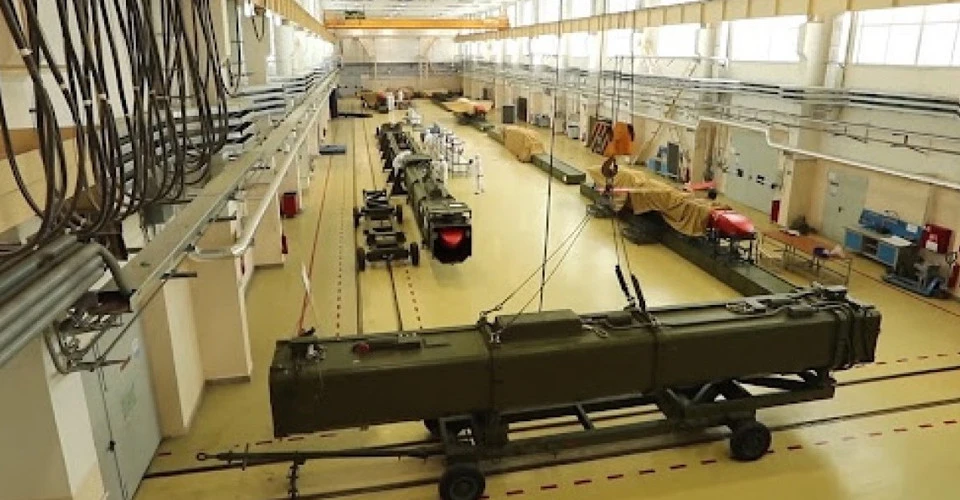 Probable appearance of the 9M730 Burevestnik and its launch container, screenshot from the Russian Defense Ministry videoThe idea is as old as the nuclear reactor itself. When it became clear in the 1950s that atomic energy was feasible, there were avant-garde projects to use nuclear reactors, specifically in aircraft and missiles.Beyond large ships and submarines, nuclear reactors did not progress further. However, it appears that in the early 2000s, Russia returned to this concept. According to some Western sources, in 2001 Russia began developing a “new” missile, which was officially announced only in spring 2018.After the 2018 announcement of the imminent Burevestnik, Russian forces conducted nuclear-related tests of unknown nature near Arkhangelsk, close to Nyonoksa, in 2019. Russia never disclosed exactly what was tested, calling it a “special device.” If it was indeed the Burevestnik, the tests failed, resulting in confirmed fatalities and spikes in radiation levels.Overall, according to some Western sources, at least 13 tests were conducted, and only two were deemed “partially successful.”Over the years there were long pauses, government-edited videos, fragments of what appeared to be a missile in a container with a new nose resembling the German Taurus, several news waves about “continued testing,” and occasional claims of “successful stages” without confirmed flight tests. The most significant leak of project details, whether controlled or not, came through anti-Kremlin media outlets in the West. These publications suggested that the nuclear-powered jet engine underwent bench tests (i.e., tested while fixed to test infrastructure) at Rosatom facilities. Allegedly, in a few experiments, the engine achieved a more-or-less stable operation on the ground under special conditions.That may be true, as previous nuclear rocket engines had demonstrated stable performance. However, the Americans concluded that developing a missile with such an engine was a dead-end and abandoned the concept.The American Pluto: why the U.S. abandoned the idea of a nuclear-powered missileIn 1957–1964, the U.S. developed the Pluto project — a supersonic cruise missile with a nuclear direct-flow air-breathing engine, or ramjet in Western terminology.A few explanations are needed.The idea is simple: heat atmospheric air with nuclear fuel to produce jet thrust. That requires the missile to fly very fast, near the edge of hypersonic speed, so air can enter the engine without complex turbines used in modern cruise missiles. But the flight becomes inefficient, the missile can hardly maneuver, and it is difficult to guide to a target. A similar limitation is chronically seen with the experimental Russian Zircon. So the Burevestnik concept is essentially to put an even more experimental nuclear direct-flow engine from Rosatom into an already experimental platform like Zircon.The U.S. took a completely different, more promising path to fielding hypersonics — interested readers can find ample open-source information about Dark Eagle. Americans experimented with nuclear rocket engines for a long time and progressed further than Putin’s Russia. But ultimately, as noted, they abandoned the idea as unnecessary.
Probable appearance of the 9M730 Burevestnik and its launch container, screenshot from the Russian Defense Ministry videoThe idea is as old as the nuclear reactor itself. When it became clear in the 1950s that atomic energy was feasible, there were avant-garde projects to use nuclear reactors, specifically in aircraft and missiles.Beyond large ships and submarines, nuclear reactors did not progress further. However, it appears that in the early 2000s, Russia returned to this concept. According to some Western sources, in 2001 Russia began developing a “new” missile, which was officially announced only in spring 2018.After the 2018 announcement of the imminent Burevestnik, Russian forces conducted nuclear-related tests of unknown nature near Arkhangelsk, close to Nyonoksa, in 2019. Russia never disclosed exactly what was tested, calling it a “special device.” If it was indeed the Burevestnik, the tests failed, resulting in confirmed fatalities and spikes in radiation levels.Overall, according to some Western sources, at least 13 tests were conducted, and only two were deemed “partially successful.”Over the years there were long pauses, government-edited videos, fragments of what appeared to be a missile in a container with a new nose resembling the German Taurus, several news waves about “continued testing,” and occasional claims of “successful stages” without confirmed flight tests. The most significant leak of project details, whether controlled or not, came through anti-Kremlin media outlets in the West. These publications suggested that the nuclear-powered jet engine underwent bench tests (i.e., tested while fixed to test infrastructure) at Rosatom facilities. Allegedly, in a few experiments, the engine achieved a more-or-less stable operation on the ground under special conditions.That may be true, as previous nuclear rocket engines had demonstrated stable performance. However, the Americans concluded that developing a missile with such an engine was a dead-end and abandoned the concept.The American Pluto: why the U.S. abandoned the idea of a nuclear-powered missileIn 1957–1964, the U.S. developed the Pluto project — a supersonic cruise missile with a nuclear direct-flow air-breathing engine, or ramjet in Western terminology.A few explanations are needed.The idea is simple: heat atmospheric air with nuclear fuel to produce jet thrust. That requires the missile to fly very fast, near the edge of hypersonic speed, so air can enter the engine without complex turbines used in modern cruise missiles. But the flight becomes inefficient, the missile can hardly maneuver, and it is difficult to guide to a target. A similar limitation is chronically seen with the experimental Russian Zircon. So the Burevestnik concept is essentially to put an even more experimental nuclear direct-flow engine from Rosatom into an already experimental platform like Zircon.The U.S. took a completely different, more promising path to fielding hypersonics — interested readers can find ample open-source information about Dark Eagle. Americans experimented with nuclear rocket engines for a long time and progressed further than Putin’s Russia. But ultimately, as noted, they abandoned the idea as unnecessary.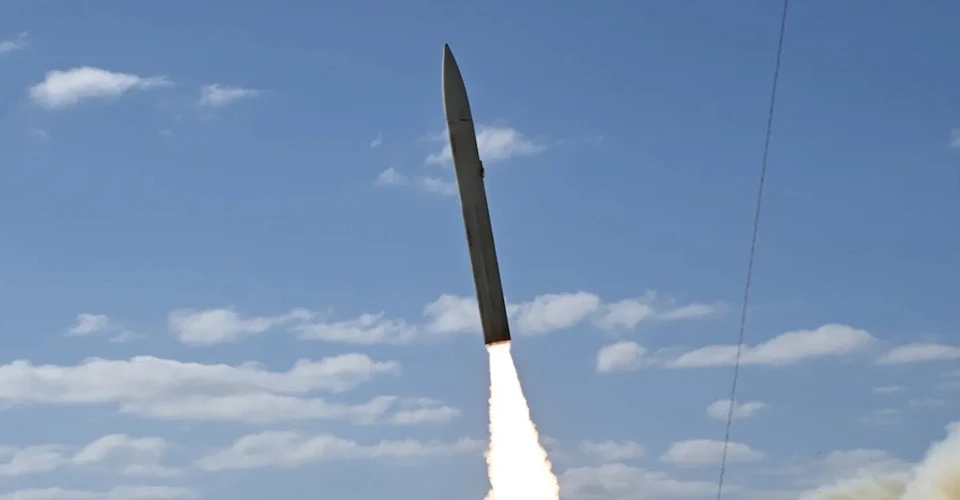 Test of the long-range hypersonic missile Dark Eagle, photo: U.S. Department of DefenseWhy?During bench tests in the early 1960s, the Tory II-C engine at the Jackass Flats test site in Nevada demonstrated stable operation at full power, over half a gigawatt, proving the engine’s physics were sound. But moving from a test stand to a weapon proved a dead end. Flying at low altitude with an active reactor would have caused radioactive contamination along the flight path, created massive risk zones for allies and neutral countries, and presented insurmountable disposal logistics. At the same time, long-range ballistic missiles naturally capable of hypersonic speeds were already being successfully developed. Therefore, in 1964, the U.S. canceled the nuclear-powered missile project and never returned to it, due to a lack of necessity and prohibitive cost.The USSR, trying to catch up and surpass the U.S., also developed a nuclear rocket engine during the same period. A “flying atomic laboratory” based on the Tu-95 was created to test shielding and layouts, supersonic cruise missiles with conventional ramjet engines were designed, and the nuclear engine itself was developed, which never demonstrated reliable results even during bench tests. However, the Russians decided that “it’s not so clear-cut”, meaning it performed poorly, and continued to push the project forward.
Test of the long-range hypersonic missile Dark Eagle, photo: U.S. Department of DefenseWhy?During bench tests in the early 1960s, the Tory II-C engine at the Jackass Flats test site in Nevada demonstrated stable operation at full power, over half a gigawatt, proving the engine’s physics were sound. But moving from a test stand to a weapon proved a dead end. Flying at low altitude with an active reactor would have caused radioactive contamination along the flight path, created massive risk zones for allies and neutral countries, and presented insurmountable disposal logistics. At the same time, long-range ballistic missiles naturally capable of hypersonic speeds were already being successfully developed. Therefore, in 1964, the U.S. canceled the nuclear-powered missile project and never returned to it, due to a lack of necessity and prohibitive cost.The USSR, trying to catch up and surpass the U.S., also developed a nuclear rocket engine during the same period. A “flying atomic laboratory” based on the Tu-95 was created to test shielding and layouts, supersonic cruise missiles with conventional ramjet engines were designed, and the nuclear engine itself was developed, which never demonstrated reliable results even during bench tests. However, the Russians decided that “it’s not so clear-cut”, meaning it performed poorly, and continued to push the project forward. “Flying atomic laboratory” based on the Tu-95, photo: Russian Defense MinistryWhat is known about the technical specifications of the BurevestnikReuters reports that over years of testing, few precise details about the Burevestnik’s technical specifications have emerged, but it is believed to have a range of around 23,000 km, significantly higher than the 17,000 km range of Russia’s newest intercontinental ballistic missile, the Sarmat.The missile launches from a ground-based inclined launcher using a conventional solid-fuel booster. Its nuclear engine allegedly allows it to stay airborne for many hours or even days, enabling a potential strike long after launch.What about speed? Reuters describes the Burevestnik as a subsonic missile, although no exact data on its velocity is available.
“Flying atomic laboratory” based on the Tu-95, photo: Russian Defense MinistryWhat is known about the technical specifications of the BurevestnikReuters reports that over years of testing, few precise details about the Burevestnik’s technical specifications have emerged, but it is believed to have a range of around 23,000 km, significantly higher than the 17,000 km range of Russia’s newest intercontinental ballistic missile, the Sarmat.The missile launches from a ground-based inclined launcher using a conventional solid-fuel booster. Its nuclear engine allegedly allows it to stay airborne for many hours or even days, enabling a potential strike long after launch.What about speed? Reuters describes the Burevestnik as a subsonic missile, although no exact data on its velocity is available.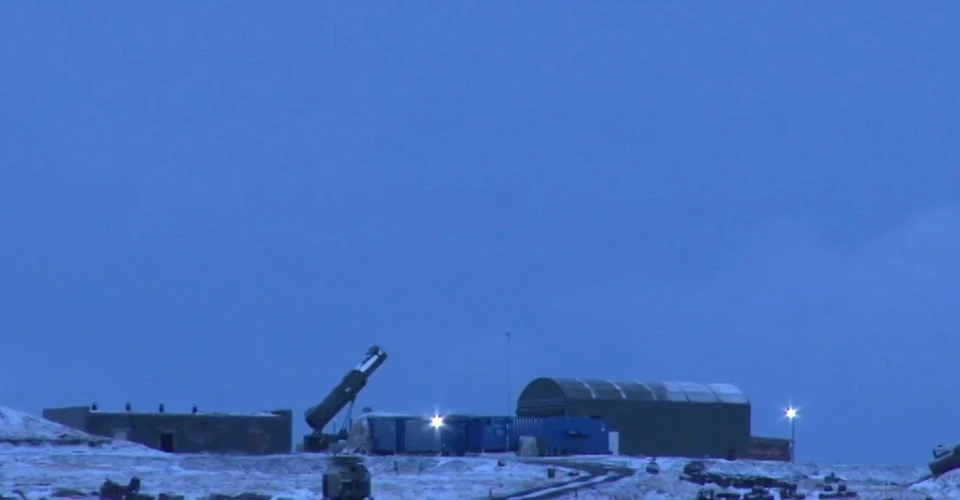 Probable appearance of the launch platform for 9M730 Burevestnik tests, screenshot from the Russian Defense Ministry videoWhy Russia pulled the Burevestnik bluff out of its sleeveTalks about the Burevestnik may serve as an important indicator that Russia is facing a sharp deficit of positive communication with the U.S. and other nuclear powers.The current information surge around the Burevestnik was reportedly prepared in Russia for at least several months. Leading up to a planned new test, several media cycles circulated about the missile, sometimes involving major Western outlets. Yet these bursts of attention quickly faded before gaining traction.As a tool to pressure the West, mentions of the Burevestnik were even less effective than Russia’s summer push near Dobropillia in the Pokrovsk sector. The reason is simple: it is clear that the Burevestnik is still far from even the canceled U.S. Pluto project. Even if Russia tried to follow the same abandoned path, this new “bird” would never hatch from its informational egg.Thus, an unusual attempt emerged: through Russian channels broadcasting Kremlin narratives to the West, the message was promoted that Pluto was canceled not due to the approach’s flaws, but for “moral reasons.” Allegedly, the U.S. was supposedly “afraid of a terrible but brilliant idea,” whereas Putin’s Russia was not. In this framing, the Burevestnik was meant to appear not as a stillborn project but as an infernal airborne predator, freed from Western taboos.
Probable appearance of the launch platform for 9M730 Burevestnik tests, screenshot from the Russian Defense Ministry videoWhy Russia pulled the Burevestnik bluff out of its sleeveTalks about the Burevestnik may serve as an important indicator that Russia is facing a sharp deficit of positive communication with the U.S. and other nuclear powers.The current information surge around the Burevestnik was reportedly prepared in Russia for at least several months. Leading up to a planned new test, several media cycles circulated about the missile, sometimes involving major Western outlets. Yet these bursts of attention quickly faded before gaining traction.As a tool to pressure the West, mentions of the Burevestnik were even less effective than Russia’s summer push near Dobropillia in the Pokrovsk sector. The reason is simple: it is clear that the Burevestnik is still far from even the canceled U.S. Pluto project. Even if Russia tried to follow the same abandoned path, this new “bird” would never hatch from its informational egg.Thus, an unusual attempt emerged: through Russian channels broadcasting Kremlin narratives to the West, the message was promoted that Pluto was canceled not due to the approach’s flaws, but for “moral reasons.” Allegedly, the U.S. was supposedly “afraid of a terrible but brilliant idea,” whereas Putin’s Russia was not. In this framing, the Burevestnik was meant to appear not as a stillborn project but as an infernal airborne predator, freed from Western taboos.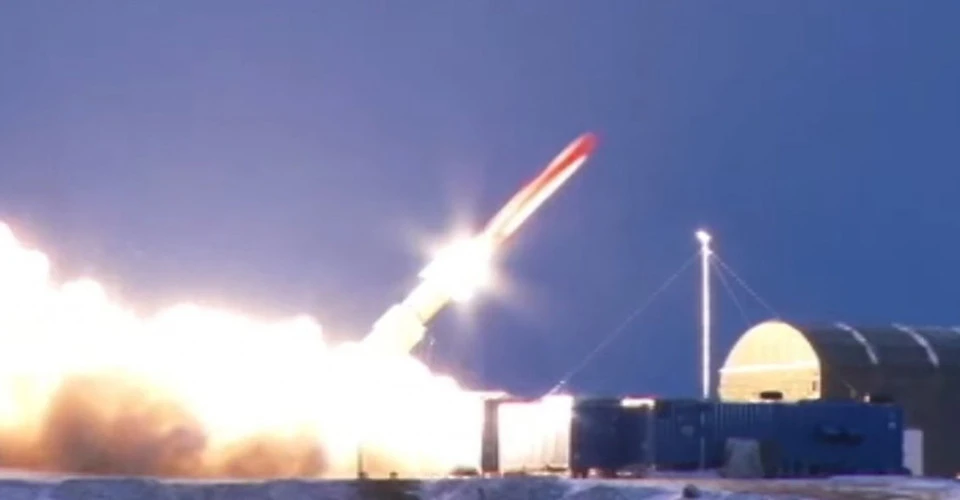 Probable launch of the 9M730 Burevestnik, screenshot from the Russian Defense Ministry videoBut historical records tell a different story: Pluto was canceled due to a lack of military need (as other delivery systems already fulfilled the required tasks), environmental unacceptability, and operational impracticality.We should not be distracted by the exotic. Russia’s Burevestnik is merely an informational and environmental problem. It brings no tactical, operational, or strategic change to the war.This material was prepared in cooperation with the Consortium for Defense Information (CDI), a project that unites Ukrainian analytical and research organizations and is aimed at strengthening information support and analytical capabilities in the fields of national security, defense, and geopolitics.
Probable launch of the 9M730 Burevestnik, screenshot from the Russian Defense Ministry videoBut historical records tell a different story: Pluto was canceled due to a lack of military need (as other delivery systems already fulfilled the required tasks), environmental unacceptability, and operational impracticality.We should not be distracted by the exotic. Russia’s Burevestnik is merely an informational and environmental problem. It brings no tactical, operational, or strategic change to the war.This material was prepared in cooperation with the Consortium for Defense Information (CDI), a project that unites Ukrainian analytical and research organizations and is aimed at strengthening information support and analytical capabilities in the fields of national security, defense, and geopolitics.
 NATO nuclear exercise Steadfast Noon 2025, photo: nato.intThat’s when the nuclear Burevestnik entered the information space, without any evidence of its existence as a combat-ready weapon. The head of Russia’s General Staff merely reported to the Russian leader that this, essentially, nuclear-powered cruise missile allegedly flew 14,000 kilometers in fifteen hours on October 21, without any details on when, from where, or to where. Efforts to convince Western and Chinese intelligence that this actually happened, so they would raise the alarm, failed. As a result, the “grand success” of Russian weapons developers had to be reported to Russian television.So what is it really?From nuclear reactor to “special device”: brief history of Russia’s BurevestnikInformation about the Burevestnik still comes solely from Russian sources. Wherever details about this missile appear, they originate from Russia, with the data simply circulating in a loop.Specifically, the Russians claim the missile has the designation 9M730. Its publicly visible history began on March 1, 2018, with slides and animations in Putin’s speech at the Manege Hall in Moscow, just before his re-election as president.From the animations and comments, it was clear that the missile is a cruise type with a nuclear-powered jet engine instead of a conventional turbojet. According to the presentation, this was supposed to give it “practically unlimited range,” allowing it to circle the Earth indefinitely in search of a target and bypass air defenses from unexpected directions.The proclaimed “special feature” of the Burevestnik is a nuclear power unit (reactor) in a direct-flow air-jet engine. This reactor heats external air to generate thrust without conventional fuel. In other words, the nuclear reactor heats air, which instead of spinning a turbine to generate electricity, is directed into the engine compressor. Expanding from the heat, the air is expelled through the nozzle, producing the jet thrust.
NATO nuclear exercise Steadfast Noon 2025, photo: nato.intThat’s when the nuclear Burevestnik entered the information space, without any evidence of its existence as a combat-ready weapon. The head of Russia’s General Staff merely reported to the Russian leader that this, essentially, nuclear-powered cruise missile allegedly flew 14,000 kilometers in fifteen hours on October 21, without any details on when, from where, or to where. Efforts to convince Western and Chinese intelligence that this actually happened, so they would raise the alarm, failed. As a result, the “grand success” of Russian weapons developers had to be reported to Russian television.So what is it really?From nuclear reactor to “special device”: brief history of Russia’s BurevestnikInformation about the Burevestnik still comes solely from Russian sources. Wherever details about this missile appear, they originate from Russia, with the data simply circulating in a loop.Specifically, the Russians claim the missile has the designation 9M730. Its publicly visible history began on March 1, 2018, with slides and animations in Putin’s speech at the Manege Hall in Moscow, just before his re-election as president.From the animations and comments, it was clear that the missile is a cruise type with a nuclear-powered jet engine instead of a conventional turbojet. According to the presentation, this was supposed to give it “practically unlimited range,” allowing it to circle the Earth indefinitely in search of a target and bypass air defenses from unexpected directions.The proclaimed “special feature” of the Burevestnik is a nuclear power unit (reactor) in a direct-flow air-jet engine. This reactor heats external air to generate thrust without conventional fuel. In other words, the nuclear reactor heats air, which instead of spinning a turbine to generate electricity, is directed into the engine compressor. Expanding from the heat, the air is expelled through the nozzle, producing the jet thrust. Probable appearance of the 9M730 Burevestnik and its launch container, screenshot from the Russian Defense Ministry videoThe idea is as old as the nuclear reactor itself. When it became clear in the 1950s that atomic energy was feasible, there were avant-garde projects to use nuclear reactors, specifically in aircraft and missiles.Beyond large ships and submarines, nuclear reactors did not progress further. However, it appears that in the early 2000s, Russia returned to this concept. According to some Western sources, in 2001 Russia began developing a “new” missile, which was officially announced only in spring 2018.After the 2018 announcement of the imminent Burevestnik, Russian forces conducted nuclear-related tests of unknown nature near Arkhangelsk, close to Nyonoksa, in 2019. Russia never disclosed exactly what was tested, calling it a “special device.” If it was indeed the Burevestnik, the tests failed, resulting in confirmed fatalities and spikes in radiation levels.Overall, according to some Western sources, at least 13 tests were conducted, and only two were deemed “partially successful.”Over the years there were long pauses, government-edited videos, fragments of what appeared to be a missile in a container with a new nose resembling the German Taurus, several news waves about “continued testing,” and occasional claims of “successful stages” without confirmed flight tests. The most significant leak of project details, whether controlled or not, came through anti-Kremlin media outlets in the West. These publications suggested that the nuclear-powered jet engine underwent bench tests (i.e., tested while fixed to test infrastructure) at Rosatom facilities. Allegedly, in a few experiments, the engine achieved a more-or-less stable operation on the ground under special conditions.That may be true, as previous nuclear rocket engines had demonstrated stable performance. However, the Americans concluded that developing a missile with such an engine was a dead-end and abandoned the concept.The American Pluto: why the U.S. abandoned the idea of a nuclear-powered missileIn 1957–1964, the U.S. developed the Pluto project — a supersonic cruise missile with a nuclear direct-flow air-breathing engine, or ramjet in Western terminology.A few explanations are needed.The idea is simple: heat atmospheric air with nuclear fuel to produce jet thrust. That requires the missile to fly very fast, near the edge of hypersonic speed, so air can enter the engine without complex turbines used in modern cruise missiles. But the flight becomes inefficient, the missile can hardly maneuver, and it is difficult to guide to a target. A similar limitation is chronically seen with the experimental Russian Zircon. So the Burevestnik concept is essentially to put an even more experimental nuclear direct-flow engine from Rosatom into an already experimental platform like Zircon.The U.S. took a completely different, more promising path to fielding hypersonics — interested readers can find ample open-source information about Dark Eagle. Americans experimented with nuclear rocket engines for a long time and progressed further than Putin’s Russia. But ultimately, as noted, they abandoned the idea as unnecessary.
Probable appearance of the 9M730 Burevestnik and its launch container, screenshot from the Russian Defense Ministry videoThe idea is as old as the nuclear reactor itself. When it became clear in the 1950s that atomic energy was feasible, there were avant-garde projects to use nuclear reactors, specifically in aircraft and missiles.Beyond large ships and submarines, nuclear reactors did not progress further. However, it appears that in the early 2000s, Russia returned to this concept. According to some Western sources, in 2001 Russia began developing a “new” missile, which was officially announced only in spring 2018.After the 2018 announcement of the imminent Burevestnik, Russian forces conducted nuclear-related tests of unknown nature near Arkhangelsk, close to Nyonoksa, in 2019. Russia never disclosed exactly what was tested, calling it a “special device.” If it was indeed the Burevestnik, the tests failed, resulting in confirmed fatalities and spikes in radiation levels.Overall, according to some Western sources, at least 13 tests were conducted, and only two were deemed “partially successful.”Over the years there were long pauses, government-edited videos, fragments of what appeared to be a missile in a container with a new nose resembling the German Taurus, several news waves about “continued testing,” and occasional claims of “successful stages” without confirmed flight tests. The most significant leak of project details, whether controlled or not, came through anti-Kremlin media outlets in the West. These publications suggested that the nuclear-powered jet engine underwent bench tests (i.e., tested while fixed to test infrastructure) at Rosatom facilities. Allegedly, in a few experiments, the engine achieved a more-or-less stable operation on the ground under special conditions.That may be true, as previous nuclear rocket engines had demonstrated stable performance. However, the Americans concluded that developing a missile with such an engine was a dead-end and abandoned the concept.The American Pluto: why the U.S. abandoned the idea of a nuclear-powered missileIn 1957–1964, the U.S. developed the Pluto project — a supersonic cruise missile with a nuclear direct-flow air-breathing engine, or ramjet in Western terminology.A few explanations are needed.The idea is simple: heat atmospheric air with nuclear fuel to produce jet thrust. That requires the missile to fly very fast, near the edge of hypersonic speed, so air can enter the engine without complex turbines used in modern cruise missiles. But the flight becomes inefficient, the missile can hardly maneuver, and it is difficult to guide to a target. A similar limitation is chronically seen with the experimental Russian Zircon. So the Burevestnik concept is essentially to put an even more experimental nuclear direct-flow engine from Rosatom into an already experimental platform like Zircon.The U.S. took a completely different, more promising path to fielding hypersonics — interested readers can find ample open-source information about Dark Eagle. Americans experimented with nuclear rocket engines for a long time and progressed further than Putin’s Russia. But ultimately, as noted, they abandoned the idea as unnecessary. Test of the long-range hypersonic missile Dark Eagle, photo: U.S. Department of DefenseWhy?During bench tests in the early 1960s, the Tory II-C engine at the Jackass Flats test site in Nevada demonstrated stable operation at full power, over half a gigawatt, proving the engine’s physics were sound. But moving from a test stand to a weapon proved a dead end. Flying at low altitude with an active reactor would have caused radioactive contamination along the flight path, created massive risk zones for allies and neutral countries, and presented insurmountable disposal logistics. At the same time, long-range ballistic missiles naturally capable of hypersonic speeds were already being successfully developed. Therefore, in 1964, the U.S. canceled the nuclear-powered missile project and never returned to it, due to a lack of necessity and prohibitive cost.The USSR, trying to catch up and surpass the U.S., also developed a nuclear rocket engine during the same period. A “flying atomic laboratory” based on the Tu-95 was created to test shielding and layouts, supersonic cruise missiles with conventional ramjet engines were designed, and the nuclear engine itself was developed, which never demonstrated reliable results even during bench tests. However, the Russians decided that “it’s not so clear-cut”, meaning it performed poorly, and continued to push the project forward.
Test of the long-range hypersonic missile Dark Eagle, photo: U.S. Department of DefenseWhy?During bench tests in the early 1960s, the Tory II-C engine at the Jackass Flats test site in Nevada demonstrated stable operation at full power, over half a gigawatt, proving the engine’s physics were sound. But moving from a test stand to a weapon proved a dead end. Flying at low altitude with an active reactor would have caused radioactive contamination along the flight path, created massive risk zones for allies and neutral countries, and presented insurmountable disposal logistics. At the same time, long-range ballistic missiles naturally capable of hypersonic speeds were already being successfully developed. Therefore, in 1964, the U.S. canceled the nuclear-powered missile project and never returned to it, due to a lack of necessity and prohibitive cost.The USSR, trying to catch up and surpass the U.S., also developed a nuclear rocket engine during the same period. A “flying atomic laboratory” based on the Tu-95 was created to test shielding and layouts, supersonic cruise missiles with conventional ramjet engines were designed, and the nuclear engine itself was developed, which never demonstrated reliable results even during bench tests. However, the Russians decided that “it’s not so clear-cut”, meaning it performed poorly, and continued to push the project forward. “Flying atomic laboratory” based on the Tu-95, photo: Russian Defense MinistryWhat is known about the technical specifications of the BurevestnikReuters reports that over years of testing, few precise details about the Burevestnik’s technical specifications have emerged, but it is believed to have a range of around 23,000 km, significantly higher than the 17,000 km range of Russia’s newest intercontinental ballistic missile, the Sarmat.The missile launches from a ground-based inclined launcher using a conventional solid-fuel booster. Its nuclear engine allegedly allows it to stay airborne for many hours or even days, enabling a potential strike long after launch.What about speed? Reuters describes the Burevestnik as a subsonic missile, although no exact data on its velocity is available.
“Flying atomic laboratory” based on the Tu-95, photo: Russian Defense MinistryWhat is known about the technical specifications of the BurevestnikReuters reports that over years of testing, few precise details about the Burevestnik’s technical specifications have emerged, but it is believed to have a range of around 23,000 km, significantly higher than the 17,000 km range of Russia’s newest intercontinental ballistic missile, the Sarmat.The missile launches from a ground-based inclined launcher using a conventional solid-fuel booster. Its nuclear engine allegedly allows it to stay airborne for many hours or even days, enabling a potential strike long after launch.What about speed? Reuters describes the Burevestnik as a subsonic missile, although no exact data on its velocity is available. Probable appearance of the launch platform for 9M730 Burevestnik tests, screenshot from the Russian Defense Ministry videoWhy Russia pulled the Burevestnik bluff out of its sleeveTalks about the Burevestnik may serve as an important indicator that Russia is facing a sharp deficit of positive communication with the U.S. and other nuclear powers.The current information surge around the Burevestnik was reportedly prepared in Russia for at least several months. Leading up to a planned new test, several media cycles circulated about the missile, sometimes involving major Western outlets. Yet these bursts of attention quickly faded before gaining traction.As a tool to pressure the West, mentions of the Burevestnik were even less effective than Russia’s summer push near Dobropillia in the Pokrovsk sector. The reason is simple: it is clear that the Burevestnik is still far from even the canceled U.S. Pluto project. Even if Russia tried to follow the same abandoned path, this new “bird” would never hatch from its informational egg.Thus, an unusual attempt emerged: through Russian channels broadcasting Kremlin narratives to the West, the message was promoted that Pluto was canceled not due to the approach’s flaws, but for “moral reasons.” Allegedly, the U.S. was supposedly “afraid of a terrible but brilliant idea,” whereas Putin’s Russia was not. In this framing, the Burevestnik was meant to appear not as a stillborn project but as an infernal airborne predator, freed from Western taboos.
Probable appearance of the launch platform for 9M730 Burevestnik tests, screenshot from the Russian Defense Ministry videoWhy Russia pulled the Burevestnik bluff out of its sleeveTalks about the Burevestnik may serve as an important indicator that Russia is facing a sharp deficit of positive communication with the U.S. and other nuclear powers.The current information surge around the Burevestnik was reportedly prepared in Russia for at least several months. Leading up to a planned new test, several media cycles circulated about the missile, sometimes involving major Western outlets. Yet these bursts of attention quickly faded before gaining traction.As a tool to pressure the West, mentions of the Burevestnik were even less effective than Russia’s summer push near Dobropillia in the Pokrovsk sector. The reason is simple: it is clear that the Burevestnik is still far from even the canceled U.S. Pluto project. Even if Russia tried to follow the same abandoned path, this new “bird” would never hatch from its informational egg.Thus, an unusual attempt emerged: through Russian channels broadcasting Kremlin narratives to the West, the message was promoted that Pluto was canceled not due to the approach’s flaws, but for “moral reasons.” Allegedly, the U.S. was supposedly “afraid of a terrible but brilliant idea,” whereas Putin’s Russia was not. In this framing, the Burevestnik was meant to appear not as a stillborn project but as an infernal airborne predator, freed from Western taboos. Probable launch of the 9M730 Burevestnik, screenshot from the Russian Defense Ministry videoBut historical records tell a different story: Pluto was canceled due to a lack of military need (as other delivery systems already fulfilled the required tasks), environmental unacceptability, and operational impracticality.We should not be distracted by the exotic. Russia’s Burevestnik is merely an informational and environmental problem. It brings no tactical, operational, or strategic change to the war.This material was prepared in cooperation with the Consortium for Defense Information (CDI), a project that unites Ukrainian analytical and research organizations and is aimed at strengthening information support and analytical capabilities in the fields of national security, defense, and geopolitics.
Probable launch of the 9M730 Burevestnik, screenshot from the Russian Defense Ministry videoBut historical records tell a different story: Pluto was canceled due to a lack of military need (as other delivery systems already fulfilled the required tasks), environmental unacceptability, and operational impracticality.We should not be distracted by the exotic. Russia’s Burevestnik is merely an informational and environmental problem. It brings no tactical, operational, or strategic change to the war.This material was prepared in cooperation with the Consortium for Defense Information (CDI), a project that unites Ukrainian analytical and research organizations and is aimed at strengthening information support and analytical capabilities in the fields of national security, defense, and geopolitics.







